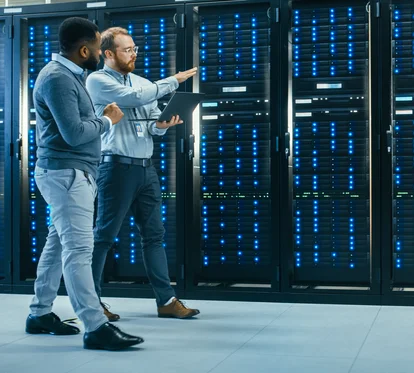1. Cloud is not a traditional data center
Cloud is basically a delivery form of computing power and storage. However, this is not a traditional data center. In the cloud, the IT infrastructure is offered as a service. This makes the infrastructure less technical, especially with service models such as PaaS and SaaS.
In practice, because of this shift, there are two major differences between the cloud and the traditional data center. The first thing that arises with the cloud is the possibility to purchase capacity as required. This allows organizations to easily scale up and down (provided the applications are suitable for this). But if the cloud is set up as statically as the traditional data center, you will not be able to maximize the benefits of the cloud.
Secondly, it is good to realize that responsibilities are shared in the cloud. Where you have grip on the entire spectrum (from housing to infrastructure) with your own data center , you do not have that grip if you use the cloud. When moving workloads to the cloud, it is therefore necessary to consider whether this is allowed according to your own company policy or the implications of laws and regulations.
2. Security shifts
Application and data security is one of the most important topics in the current era. When migrating applications to the cloud, extra attention must be paid to this. To ensure that applications and data are resistant to threats, the security policy must be implemented differently than in a traditional data center.
Due to the open nature of the cloud, perimeter protection is not sufficient. This certainly applies to the public version. Yet many traditional environments still rely on this form of protection. Applications and data are shielded from the internet with a traditional firewall, after which the data center is considered safe. But in the cloud, boundaries are blurrier and responsibilities are shared with other parties. This makes the zero-trust principle more applicable. In principle, everything is unsafe and must be checked. This means that there is no longer a secure (internal) data center. Moving an application one-to-one to the cloud can therefore have the undesirable effect of making it accessible to unauthorized persons. An appropriate security policy in the cloud must therefore provide for the protection of identities, segmentation of workloads and the monitoring and follow-up of unwanted activities..




